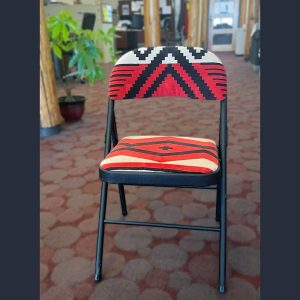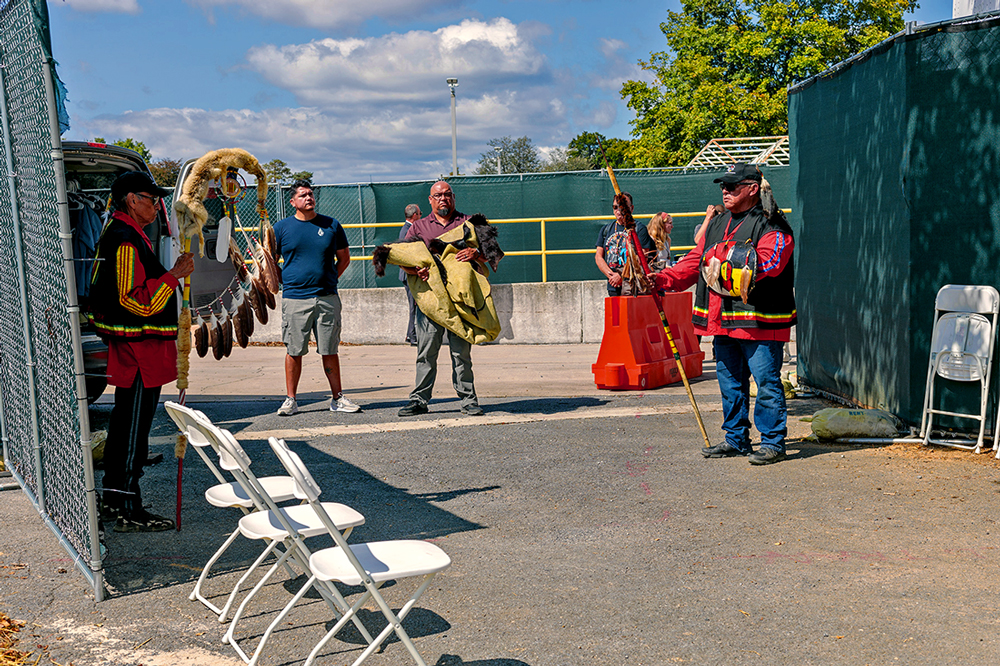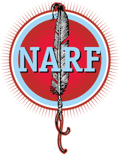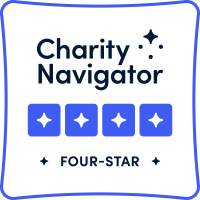In 1879, Amos was among the first group of children sent to the first off-reservation federal Indian boarding school, Carlisle Indian Industrial School. Amos’ family only intended for him to remain at Carlisle for three years. Instead, Amos became the first of hundreds of children to die at Carlisle. As the son of one of Sisseton Wahpeton Oyate (SWO)’s most prominent and celebrated leaders, SWO once expected Amos to return home to lead his people like his father.
In September 2023, SWO brought Amos home so he could be laid to rest on their reservation next to his father, and so SWO can continue to heal from the harm the federal Indian boarding school era caused.
Background:
In 2016, the Army held listening sessions for tribal nations to discuss the return of their children from Carlisle. At the sessions, the Army claimed that the Native American Graves Protection and Repatriation Act (NAGPRA) did not apply to the children buried at Carlisle cemetery.
Instead, the Army alleges that internal Army repatriation policies apply, rather than NAGPRA. This unjustified, hardline stance has impeded SWO’s efforts towards Amos’ expeditious repatriation.
For example, in early 2022, SWO submitted all the repatriation documents required by Army policies and expected Amos’ return that summer. Instead, the Army gave SWO conflicting information, maintained SWO had missed the deadline for summer repatriations, and cited funding constraints and issues with planning as reasons why the repatriation would be delayed until a later unknown date. These excuses ignored the fact that Army policies do not provide any repatriation deadlines that tribal nations must meet. As of March 2023, the Army had not reached out to SWO to discuss Amos’ return home.
The Army’s repatriation policies are restrictive and burdensome to a degree that egregiously violates NAGPRA’s provisions and purpose. For instance, Army policies require a signed affidavit from a child’s closest living relative to initiate their repatriation. The policies provide no means of repatriation by a child’s tribe if a living relative cannot be identified.
By contrast, NAGPRA allows for the tribal nation culturally affiliated with the child to request repatriation. This is important for many reasons, including that locating the closest living relative of a child who died nearly 150 years ago has proven challenging and at times impossible for tribal nations.
Backed by SWO tribal leadership, much of SWO’s efforts to repatriate their children has been led by Tamara St. John and four other SWO tribal citizens who serve in the Tribal Historic Preservation Office—Dianne Desrosiers, Shaye Desrosiers, Alicia Amos, and Angeline Wanna. Dianne Desrosiers is SWO’s Tribal Historic Preservation Officer and St. John works as SWO’s Tribal archivist and historian and serves as a South Dakota state legislator. St. John spent six years researching the history and searching for living relatives of SWO’s children sent to Carlisle.
“There were six of our children that were the first sent to Carlisle,” said St. John. “Four boys and two girls.” St. John knows each of their stories by heart. Three of the boys died at Carlisle. While the fourth returned home, he died not long after his arrival. Despite this, St. John believes all four boys died because of their time at Carlisle. “All six children were the children of chiefs; they were children of tribal leadership. Carlisle officials chose to take Sioux children first because the Sioux were often the most resistant to U.S. assimilation tactics.”
Army policies also only provide for “limited” ceremonies during the repatriation process. St. John emphasized the importance of bringing SWO’s children home with honor and in the traditional ways that are important to SWO. St. John also explained that a repatriation requires the presence of certain individuals to perform necessary ceremonies and religious practices. While the Army touts that they fund what they determine to be all “reasonable” repatriation costs, they only fund travel expenses for two family members and two tribal leaders.
The words of SWO elder and language speaker, John Eagle, illustrate the importance of conducting repatriation pursuant to SWO customs and protocols. St. John vividly remembers the moment Eagle told her, “When you bring them home, you bring them home like the chiefs that they are. You bring them home in a buffalo robe. You bring them home in honor, because they would have been our chiefs if they had lived.”
The Army is required by NAGPRA to initiate proceedings to repatriate Amos. While SWO endeavored to comply with the Army’s policies to secure Amos’ repatriation, the efforts were met with silence by the Army. SWO viewed the Army’s unexplained inaction and lack of accountability as direct contravention of federal law and their government-to-government responsibilities.
The purpose of NAGPRA is to recognize the right of tribal nations to challenge the unilateral withholding of their relatives’ remains. That is the right SWO sought to vindicate with its letter requesting Amos’ repatriation.
Marie Renville, an SWO elder and relative of two of SWO’s children sent to Carlisle, is unwavering in her commitment to the return of SWO’s children. “They are waiting to come home, because they told us. As long as I am alive, it will be my mission to bring them home.”
Actions:
March 2023
On March 23, 2023, SWO submitted a request to the Department of Defense, the Department of the Army, and the Office of Army Cemeteries to initiate the repatriation of one of their children, Amos LaFromboise, pursuant to the Native American Graves Protection and Repatriation Act (NAGPRA).
June 2023
On June 20, 2023, Sisseton Wahpeton Oyate issued a statement called on the U.S. Army to respect its children and its sovereignty by complying with the Native American Graves Protection and Repatriation Act (NAGPRA) to ensure an honorable repatriation for its child, Amos LaFromboise. The Army published a notice in the Federal Register on May 24, 2023, of its intent to disinter Amos without having provided the Tribe and his family with adequate prior consultation or finalization of a NAGPRA agreement.
The tribal statement begans: “When our child, Amos LaFromboise, passed away at Carlisle Indian Boarding School in November of 1879, the Army took it upon itself to bury Amos without notifying Sisseton Wahpeton Oyate or even Amos’ immediate family members. More than a century later, the Army continues to exercise arbitrary control over our children.”

The federal register notice ignored the Tribe’s request earlier in 2023 to have Amos repatriated pursuant to NAGPRA. While the Tribe and family wished to see an expeditious return home of Amos, the Tribe did not view the notice as a victory, but, rather, a continuation of the Army’s disregard for the Tribe’s sovereignty and a lack of respect for the careful planning and honor that encompasses a repatriation.
The differences between the process the Army seeks to impose and NAGPRA’s process are of no small consequence. NAGPRA is the hard-fought and controlling federal law that vests Tribal Nations with explicit rights to direct and control repatriations. NAGPRA was passed to ensure Tribes’ right to secure honorable and culturally appropriate burials of their relatives being held by museums and federal agencies.
Without the Tribe or family’s consent, over the last 150 years, federal officials have buried, exhumed, and reburied Amos at least three times, in three separate locations. “No longer will the Tribe stand for the Army’s arbitrary and unpredictable dictation of Amos’ disposition and return home,” said Native American Rights Fund (NARF) Staff Attorney Beth Wright. “The Army’s position that NAGPRA does not apply here has delayed Amos’ return, caused confusion, and has cost the Tribe significant resources.”
The Army asserted that its application of the internal Army disinterment and return policies and processes to remains at Carlisle is in compliance with NAGPRA’s savings clause at 25 U.S.C. 3009. Despite this, the Army simultaneously denied that repatriations of Carlisle remains are subject to NAGPRA. This stance allowed the Army to put forth the impression that it follows NAGPRA while denying tribes the rights NAGPRA affords and imposing unilateral and arbitrary control over the disinterment of their children.
“The savings clause does not allow federal agencies to circumvent their duties under NAGPRA,” said NARF Staff Attorney Jason Searle.
The Tribe’s statement followed on the heels of the United States Supreme Court’s upholding of the Indian Child Welfare Act (ICWA) in Haaland v. Brackeen. The Court’s decision highlighted how essential it is to tribal sovereignty that tribes have autonomy in matters concerning their families.
September 12, 2023: Plan of Action
On September 12, 2023, Sisseton-Wahpeton Oyate (SWO) and Spirit Lake Tribe signed a first-of-its-kind signed Plan of Action (Plan) with the U.S. Army for the disinterment and return of their two children from Carlisle Barracks Main Post Cemetery in Carlisle, Pennsylvania. While several tribes have brought their children home from Carlisle Cemetery, the Tribes’ written plan with the Army is the first of its kind.
The Plan was established after the Tribes spent nearly seven years working to have their children’s remains returned to them. The Plan provided a robust set of terms to ensure a manageable and culturally appropriate process for the disinterment and return of the remains.
“I am grateful for everyone who has worked so diligently to put this all together and who has gotten us to where we are today,” said Spirit Lake Tribe’s Tribal Historic Preservation Officer KJ Graywater.
While the Army did not concede the applicability of NAGPRA, the Tribe’s NAGPRA request was a significant turning point in getting the Army’s attention and meaningful cooperation, which led to establishment of the Plan. The Plan allowed the Tribes to take a clear and active role in determining how the disinterment and return of Amos and Edward would unfold.
Through the Plan, the Tribes negotiated for provisions regarding the Tribes’ travel to Carlisle, coverage of expenses, the forensic analysis conducted to verify Amos’ and Edward’s remains, and specific tribal ceremonies the Tribes performed. In addition to these significant terms, the Plan provided disclaimers that the Tribes neither waived their NAGPRA rights nor agreed with the Army’s interpretation of NAGPRA or its conclusion that NAGPRA does not apply to the remains at Carlisle.
“The plan is important to educate the Army about how to understand and accommodate the distinct cultural practices and protocols of tribes in handling their deceased relatives,” said NARF Staff Attorney Jason Searle. Searle also noted that, “The Tribes negotiated this plan keeping in mind other tribes who want to bring their children home.”
Among the provisions negotiated for in the plan is the Tribes’ ability to hold a sweat lodge ceremony at Carlisle Barracks.
“The sweat lodge is an important piece in the plan because it brings tribal ceremonies back to a place that was designed to eradicate those very ceremonies,” said NARF Staff Attorney Beth Margaret Wright. Federal Indian boarding schools, like Carlisle, were designed to strip Native children of their cultural identities and assimilate them into non-Native culture.
“The Plan of Action was a significant step in providing Tribal Nations more control over the disinterment and return of their children. Yet, at the end of the day, the Tribes continue to maintain that NAGPRA applies to Carlisle Cemetery and should have controlled the return of their children, and the Army disagrees,” said NARF Staff Attorney Beth Margaret Wright.
September 17, 2023: Repatriation

On September 17, 2023, Spirit Lake Tribe (SLT) and Sisseton Wahpeton Oyate (SWO) arrived at Carlisle Barracks Post Cemetery to bring two of their children, Amos LaFromboise and Edward Upright, home. After nearly 150 years, the Tribes were finally able to lay their boys to rest next to each other in the Sisseton-Wahpeton Oyate repatriation grounds in South Dakota.
“The historical trauma that results from the boarding school era can be painful. It is important that Tribes support each other so we can continue to understand this history and heal,” said SWO tribal archivist and historian Tamara St. John. “Amos and Edward left for Carlisle together, so Sisseton-Wahpeton Oyate and Spirit Lake Tribe joined together to bring our boys home together.
NARF’s repatriation efforts related to boarding schools is supported by the generosity of The Christensen Fund.
More Cases

